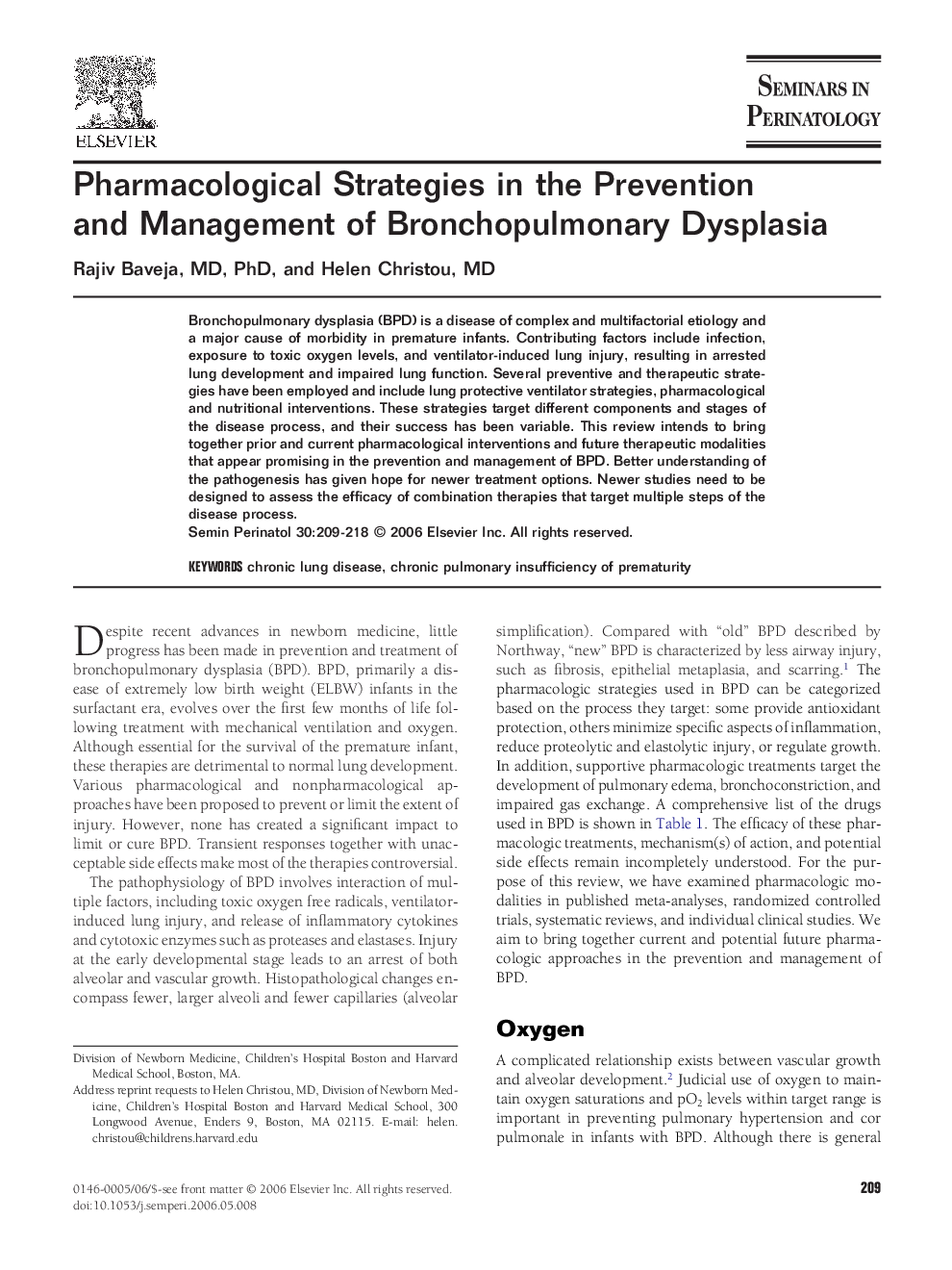| Article ID | Journal | Published Year | Pages | File Type |
|---|---|---|---|---|
| 3836999 | Seminars in Perinatology | 2006 | 10 Pages |
Bronchopulmonary dysplasia (BPD) is a disease of complex and multifactorial etiology and a major cause of morbidity in premature infants. Contributing factors include infection, exposure to toxic oxygen levels, and ventilator-induced lung injury, resulting in arrested lung development and impaired lung function. Several preventive and therapeutic strategies have been employed and include lung protective ventilator strategies, pharmacological and nutritional interventions. These strategies target different components and stages of the disease process, and their success has been variable. This review intends to bring together prior and current pharmacological interventions and future therapeutic modalities that appear promising in the prevention and management of BPD. Better understanding of the pathogenesis has given hope for newer treatment options. Newer studies need to be designed to assess the efficacy of combination therapies that target multiple steps of the disease process.
